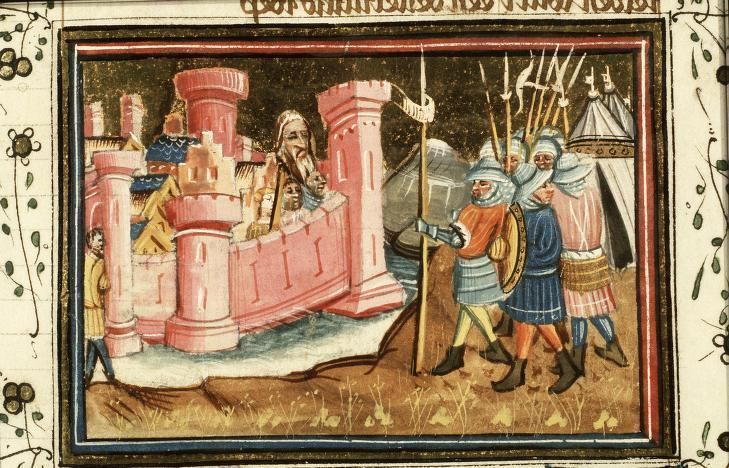 | ||
Bethulia (Greek: Βαιτυλούᾳ, Baituloua; Hebrew: בתוליה) is a Biblical city whose deliverance by Judith, when besieged by Holofernes, forms the subject of the Book of Judith.
Contents
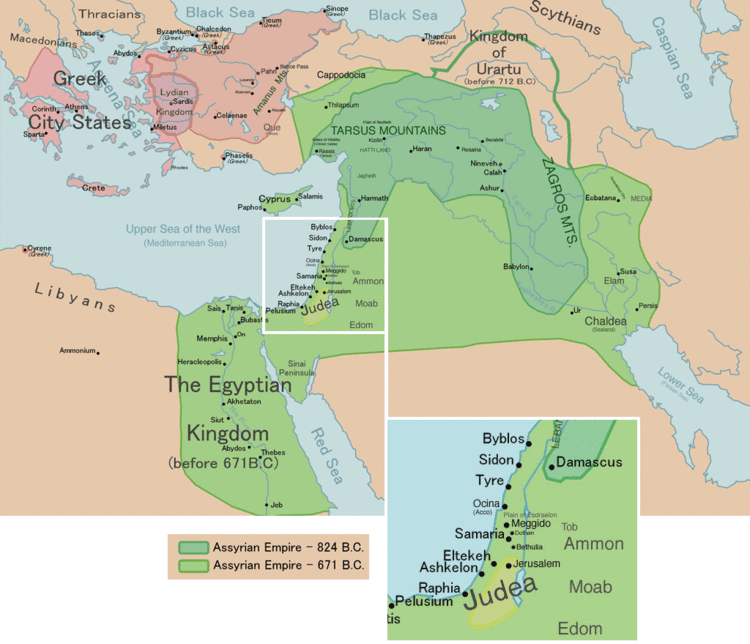
The name "Bethulia" in Hebrew translates to "a virgin," which suits the portrayal of its heroine Judith as a chaste widow and the book's emphasis on following religious rules, chastity among them.
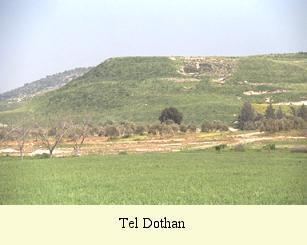
The view that Bethulia is merely a symbolic name for Jerusalem or a fictitious town, has met with little favor, even among those who deny the historical character of the book. Bethulia is clearly distinguished from Jerusalem (iv, 6; xi, 14, 19; xv, 5, 8; the references throughout the article being to the fuller Greek text), and the topographical details show that the story, even if it be only a pious romance, is connected with a definite place. Its site, however, is in dispute. Beside Sanur, Mithilîyeh or Misilîyeh, Tell Kheibar and Beit-Ilfa, which have divided opinion for some time, Haraiq el-Mallah, Khirbet Sheikh Shibel, el-Bârid and Sichem (Bethulia being considered a pseudonym) have recently been proposed as sites of Bethulia [1].
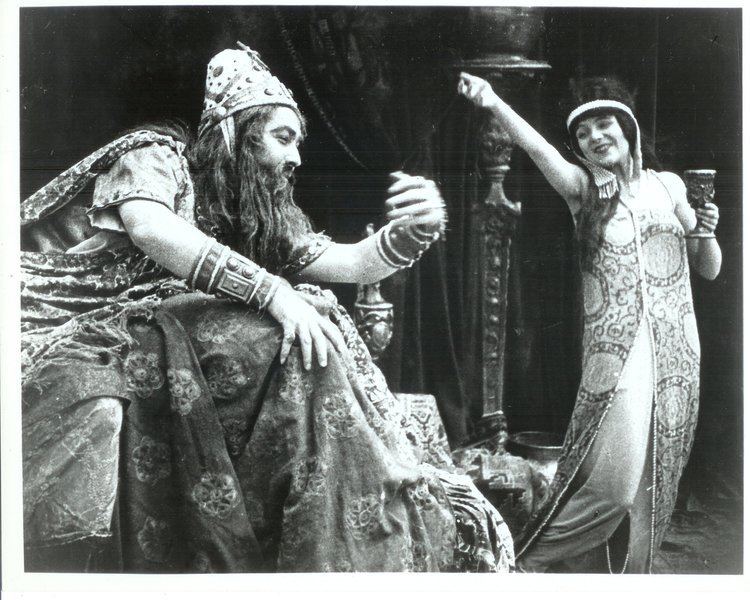
The city was situated on a mountain overlooking the plain of Jezrael, or Esdrelon, and commanding narrow; passes to the south (iv, 6, 7; vi, 11-13); at the foot of the mountain there was an important spring, and other springs were in the neighborhood (vi, 11, vii, 3, 7, 12). Moreover it lay within investing lines which ran through Dothain, or Dothan, now Tell Dothân, to Belthem, or Belma, no doubt the same as the Belamon of viii, 3, and thence to Kyamon, or Chelmon, "which lies over against Esdrelon" (vii, 3).
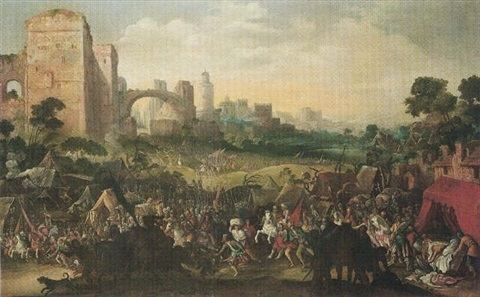
These data point to a site on the heights west of Jenin (Engannim), between the plains of Esdrelon and Dothan, where Haraiq, Kh. Sheikh Shibel, and el-Bârid lie close together. Such a site best fulfills all requirements. It lies between lines drawn from Tell Dothân to Belæema, probably Belma, or Belamon, and from the latter to el-Yâmûn, probably Kyamon; there are a number of springs and wells in the neighborhood, and nearby are the two passes of Kefr Adân and Burqîn, so narrow in places that two horsemen cannot ride abreast. One of the three above-named places is in all probability the site of ancient Bethulia. The other sites are all deficient in some essential requirement.
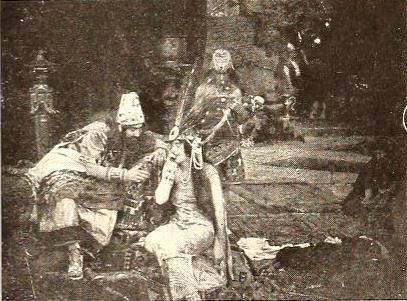
Judith of bethulia 1914
The Madaba Map
The Madaba Map mosaic, from the 6th century AD, shows a settlement named Betylion (Greek Β[ΗΤ]ΥΛΙΟΝ) on the Mediterranean coast southwest of Rafah on the Egyptian border with Gaza. The site is tentatively identified with modern Sheikh Zuweid. A late tract on the Holy Land, De Situ Terrae Sanctae ascribed to archdeacon Theodosius, identified this as the biblical site despite its incompatibility with the description in the Book of Judith: "From Rafia to Betulia, where Horofernes died, 12 miles."
